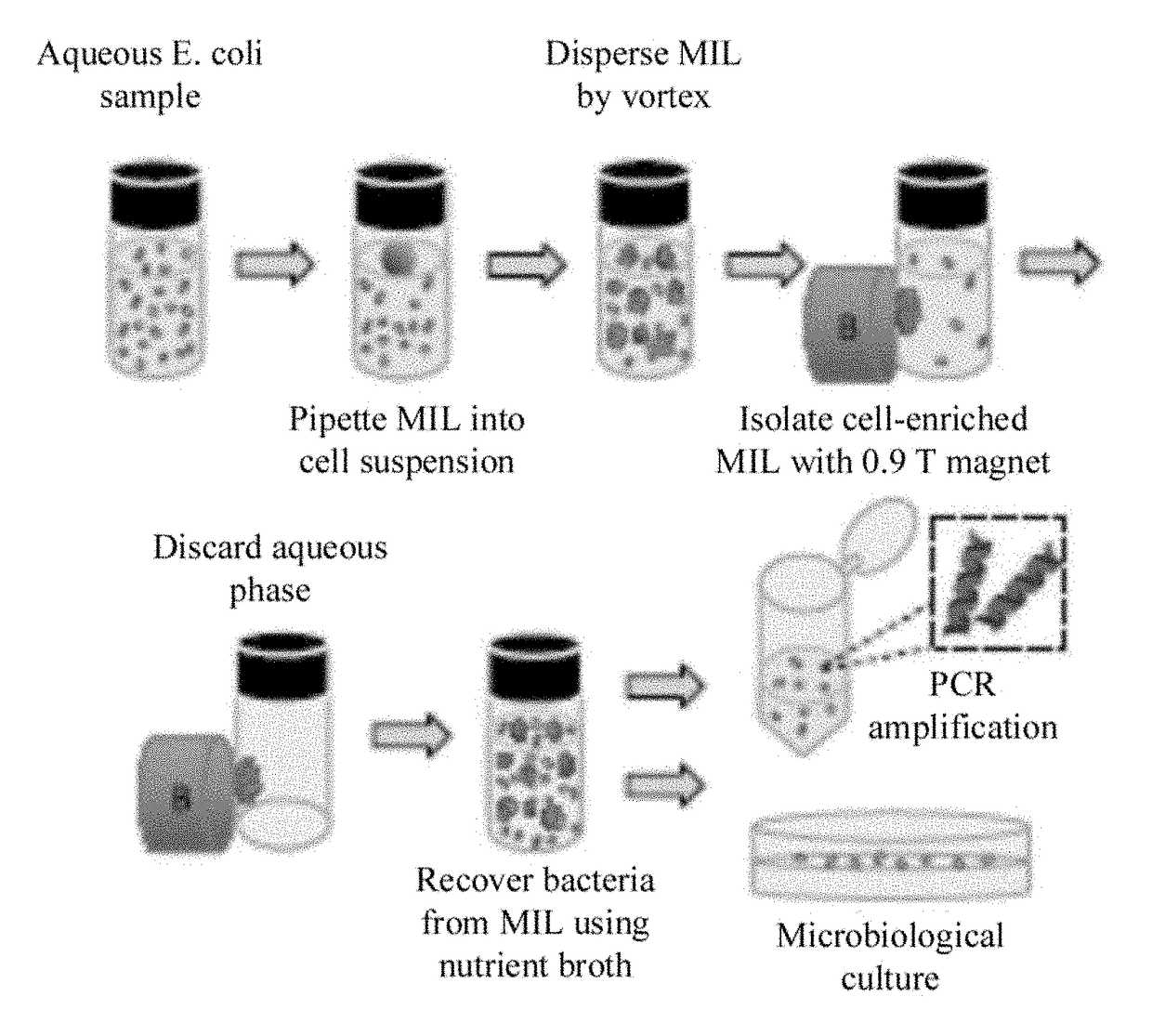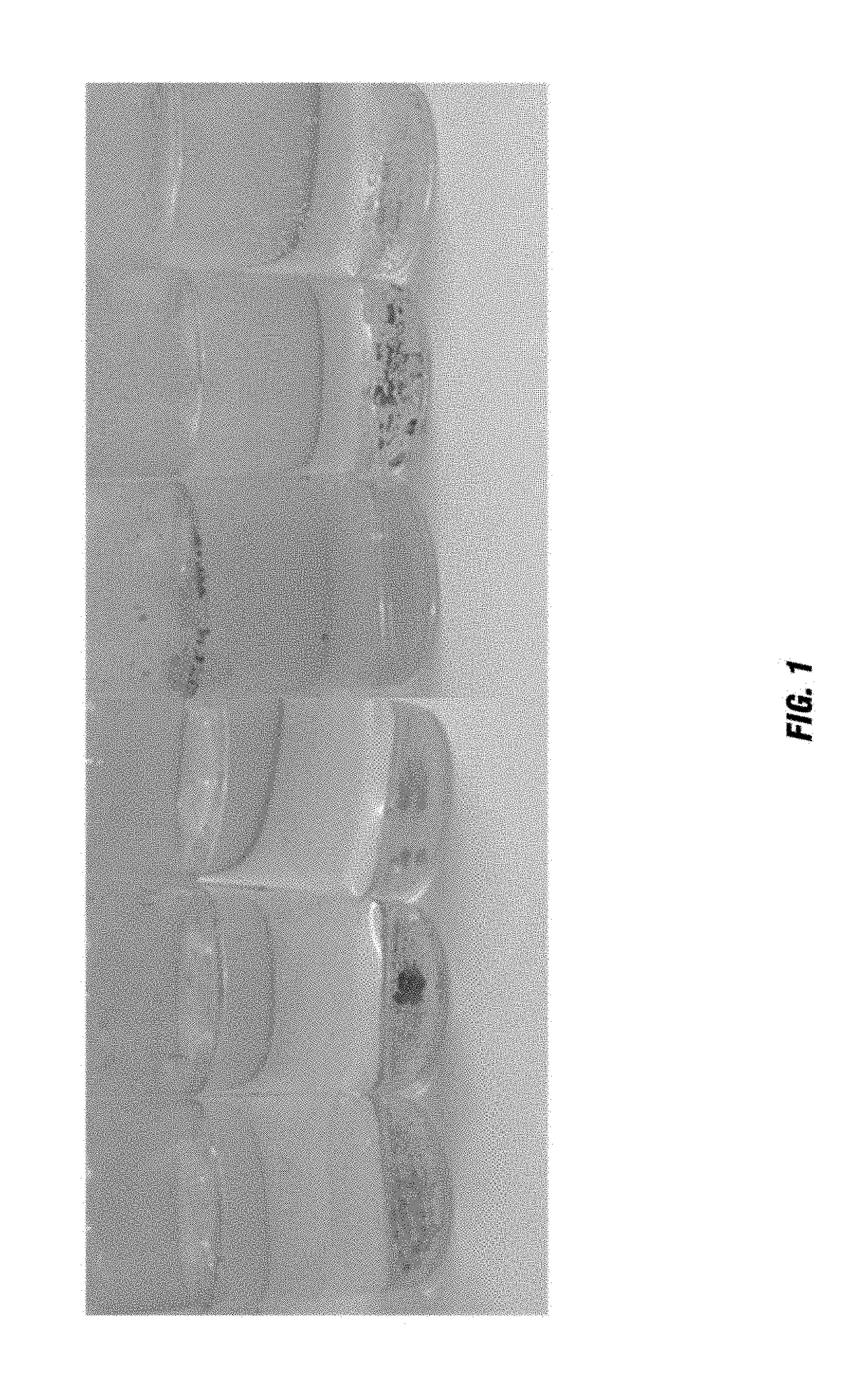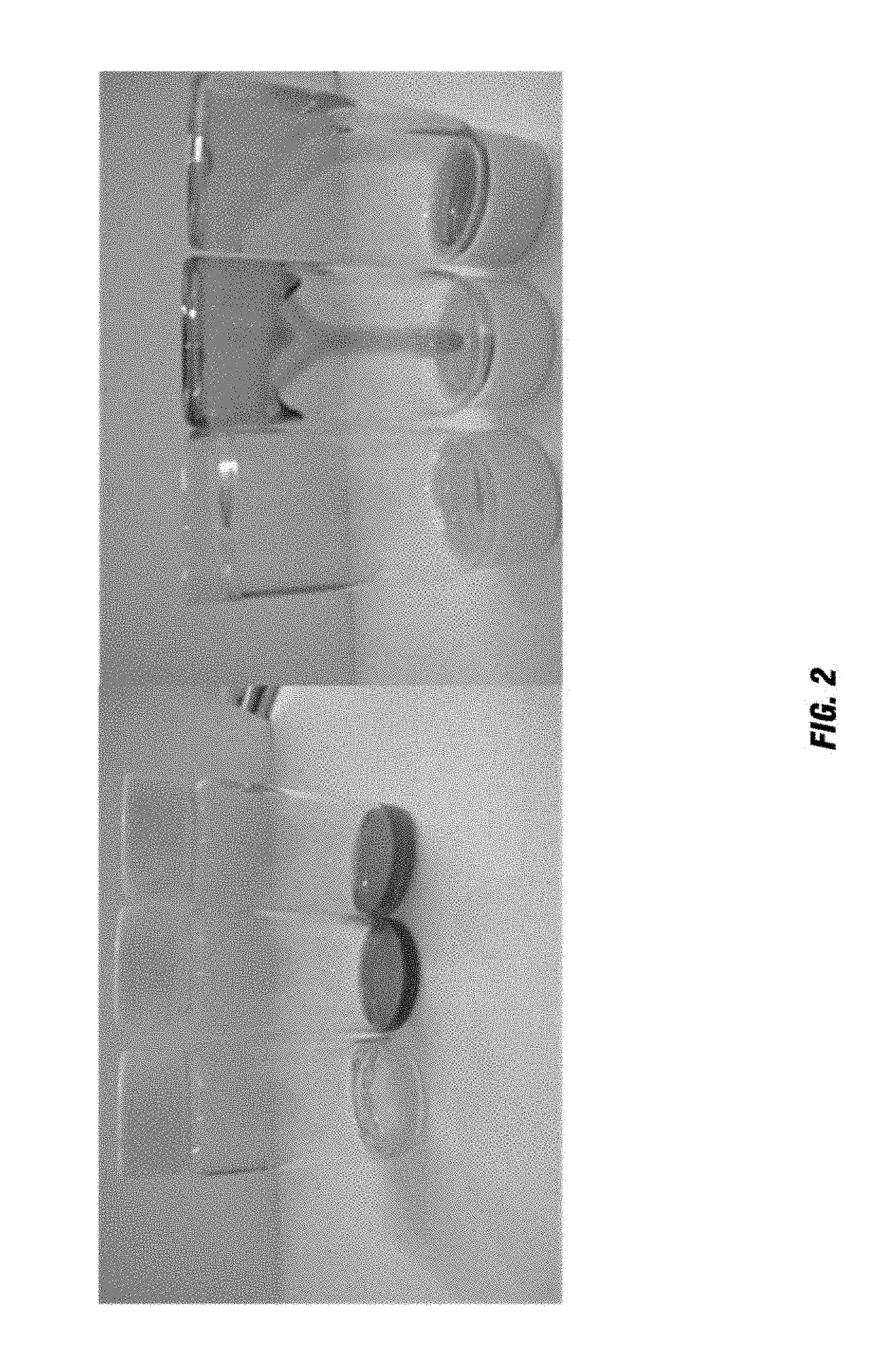Rapid preconcentration of viable bacteria using magnetic ionic liquid for PCR amplification and culture-based diagnostics
a technology viable bacteria, applied in the field of magnetic ionic liquid, can solve the problems of false negative/false positive, negative health outcomes, gastrointestinal illness, etc., and achieve the effects of low viscosity, improved accuracy, and easy handling
- Summary
- Abstract
- Description
- Claims
- Application Information
AI Technical Summary
Benefits of technology
Problems solved by technology
Method used
Image
Examples
example 1
[0135]Preparation of Exemplary Transition Metal Based MILs
[0136]Transition or rare earth metal based MILs are usually synthesized according to the steps in Scheme 1.
[0137]The exemplary MILs synthesized in this Examples section comprise heavily alkylated phosphonium-based cations, i.e., [P66614+], exhibit high hydrophobicity with relatively low melting points due largely to its asymmetry. The [P66614+][Cl−] IL is commercially available. As shown in Scheme 1, reaction of ammonium hexafluoroacetylacetonate ([NH4+][hfacac−]) with various transition and rare earth metal centers yields the hydrophobic ammonium-based salt intermediates 1a-6a that do not dissolve in water, even at very high ratios of water to salt.
[0138]Pairing of intermediate 1a to an imidazolium-based cation was carried out for preliminary viscosity and hydrophobicity testing. A metathesis reaction was performed between 1-(6-hydroxyhexyl)-3-methylimidazolium chloride [MC6OHIM+][Cl−] and intermediate 1a to form [MC6OHIM+] ...
example 2
[0149]Preparation of Exemplary Rare Earth Based MILs
[0150]MILs 4-6 were synthesized by dissolving 10 mmol of ammonium hydroxide in 30 mL of ethanol. The reaction vessel was then sealed with a rubber septum and 10 mmol of hexafluoroacetylacetone was added dropwise to the reaction via syringe. A white vapor was allowed to settle before adding 2.5 mmol of dysprosium(III) chloride hexahydrate. The reaction was allowed to stir at room temperature for 5 hours. The solvent was removed under reduced pressure and the crude product was redissolved in 20 mL of diethyl ether and washed several times with 5 mL aliquots of deionized water until the aqueous fraction yielded no precipitate during an AgNO3 test. Diethyl ether was evaporated and the anion was allowed to dry at 50° C. overnight under reduced pressure. 1.2 mmol of the anion salt was added to 1 mmol of purified phosphonium chloride and dissolved in 30 mL of methanol. This reaction was allowed to stir overnight at room temperature. The s...
example 3
[0159]Evaluation of Exemplary MILs
[0160]Water Solubility
[0161]The water solubility of these exemplary MILs was tested by pipetting a 1 μL droplet of MIL into 10 mL of deionized water to create a 0.01% (v / v) solution. After pipetting the MIL into the aqueous sample, the MIL was observed to form a wide droplet that rests on top of the solution. Vortexing the MIL droplet caused dispersion of the MIL into fine microdroplets that were suspended within the aqueous solution, ultimately settling at the bottom of the vessel. The aqueous solution exhibited no observable change in color or pH, and the MIL droplets still responded readily to an external magnetic field after three days of suspension in the aqueous phase. These are all highly attractive features required in the design of low viscosity, hydrophobic MILs that possess high magnetic susceptibility. To demonstrate the hydrophobicity of these MILs compared to other available hydrophobic MILs, 50 μL of [P66614+][FeCl4−], [P66614+][Co(hf...
PUM
| Property | Measurement | Unit |
|---|---|---|
| temperature | aaaaa | aaaaa |
| melting points | aaaaa | aaaaa |
| magnetic | aaaaa | aaaaa |
Abstract
Description
Claims
Application Information
 Login to View More
Login to View More - R&D
- Intellectual Property
- Life Sciences
- Materials
- Tech Scout
- Unparalleled Data Quality
- Higher Quality Content
- 60% Fewer Hallucinations
Browse by: Latest US Patents, China's latest patents, Technical Efficacy Thesaurus, Application Domain, Technology Topic, Popular Technical Reports.
© 2025 PatSnap. All rights reserved.Legal|Privacy policy|Modern Slavery Act Transparency Statement|Sitemap|About US| Contact US: help@patsnap.com



